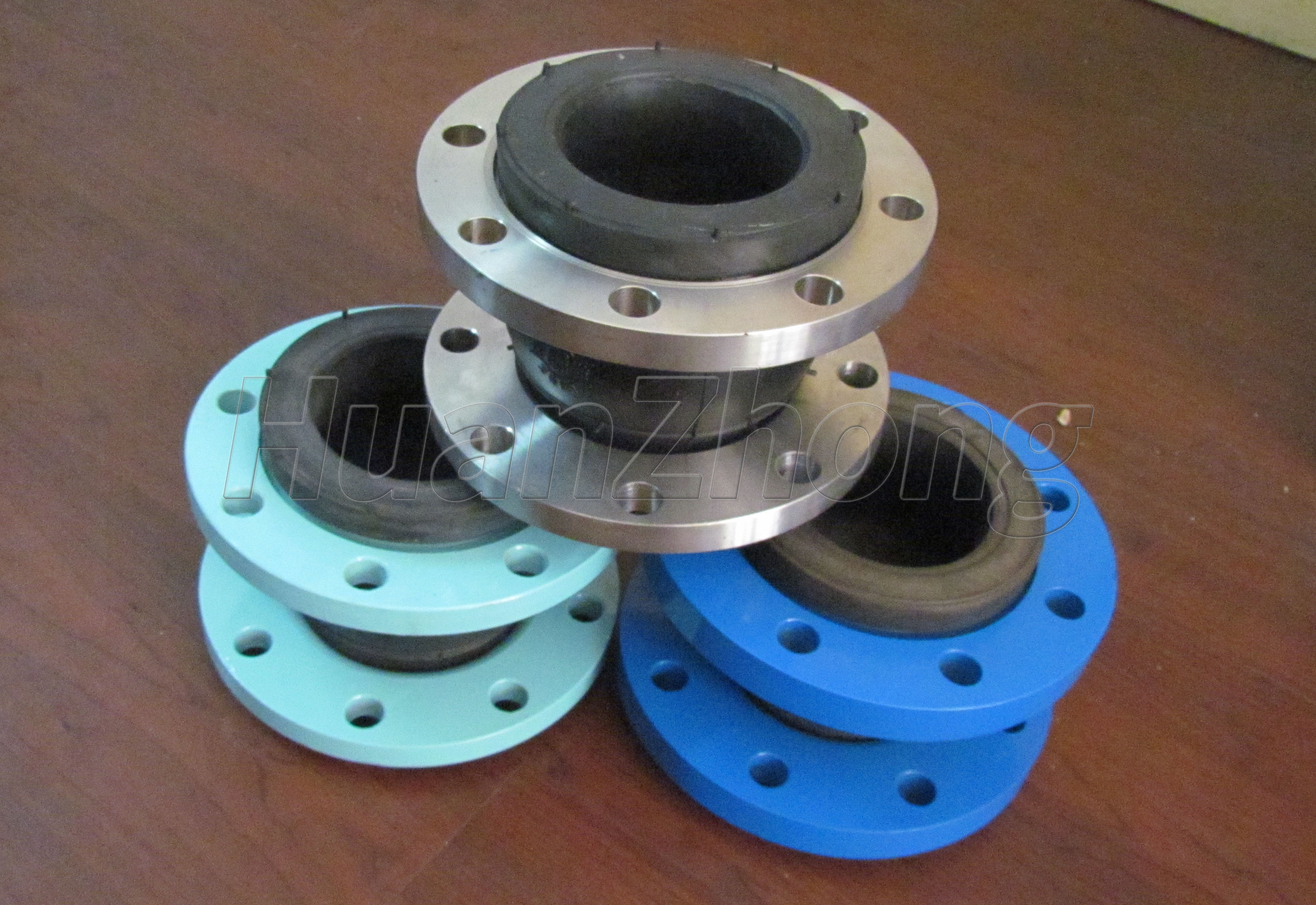Things to note when installing rubber joints
Installation of rubber joints is also an important factor that affects the service life of rubber joints, so the following matters need to be noted when installing rubber joints.
After the rubber joints are under pressure for the first time, such as after installation and test pressure, or before they are put to use again for a long period of time, the bolts should be re-pressurized and tightened before putting the rubber expansion joint into operation.
When the pipeline medium is acid, alkali, oil, high temperature and other special materials, rubber joints with one stop higher than the working pressure of the pipeline should be used.
The interface of the rubber joint should be a valve flange or a standard flange.
When the pipeline generates instant pressure and is greater than the working pressure, a joint with one stop higher than the working pressure should be used.
The normal use medium temperature of rubber joints is 0-60℃ for ordinary water, special mediums such as oil, acid, alkali, high temperature and other corrosive and hard texture should be selected with corresponding rubber joint materials, not blindly used in series or in general.
For high-rise water supply or suspended water supply, the pipeline should be fixed on the hanger, bracket or anchor, and the joint should not be allowed to bear the weight and axial force of the pipeline itself, otherwise the rubber joint should be equipped with anti-pull-off device, and its bearing force is greater than the axial force of the pipeline.
Bendable rubber joints used in the import and export of water pumps should be located near the pump side, and metal reducer joints should be installed between the pump and the pump, and installed at the large diameter of the reducer.
When the pipeline displacement is greater than or equal to the compensation amount of the joint, the number of joints should be increased to parallel the displacement amount. It is strictly forbidden to make the joint in the flexural displacement and deviation state in order to adjust the super-difference of the pipeline, much less to over-limit expansion, displacement, deflection, etc.
When installing the rubber joint, the screw of the bolt should be extended to the outside of the joint, and the bolt of each flange end face should be tightened repeatedly and evenly according to the method of diagonal pressure to prevent pressure deviation. The threaded joint should be tightened evenly with a standard wrench, not with a force-bearing rod to make the live joint slip or break, and it should be checked regularly to avoid loosening to cause dislodgement or water seepage.
When using or storing rubber joints, avoid high temperature, ozone, oil, acid and alkali environment, and build sun shelves for outdoor or windward pipelines. The surface of rubber joints should not be painted or wrapped with insulation materials, and the aging problem of rubber joint products should be checked and replaced in time.
